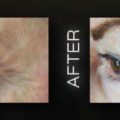Glasgow Royal Infirmary Hospital will be the first to use light to fight superbugs.
The lighting system has been researched for years by researchers at Strathclyde University, Glasgow.
The light is powerful enough to kill bacteria cells but poses no threat to patients. “The High Intensity Narrow Spectrum (HINS) light has a wavelength of 405 nanometres – just above UV – and is barely visible as a violet tinge. The light bathes the area with rays powerful enough to excite molecules in the bacteria and release chemicals that kill them. However, HINS-light is not strong enough to damage the more complicated cells of mammals.” said the Scotland, Herald.
Researchers blended the HINS-lights with LED lights to produce a warm-white lighting system that can be used alongside normal hospital lighting.
If the lighting system in the Glasgow Royal Infirmary Intensive Care Unit is proved successful it could reduce the amount of deaths caused by superbugs. There were 5000 deaths caused by superbugs in Scotland last year.
Medics believe it will make the Ward 90% cleaner than it currently is from cleaning and handwashing. The creators hope the system will revolutionise hospital sterilisation and be sold around the world, ultimately saving millions of lives.
One of the University researchers, Dr Michelle Maclean, said:
The clinical trials have shown the technology can help prevent the environmental transmission of pathogens – such as MRSA (meticillin-resistant staphylococcus aureusis) and C.diff (Clostridium difficule) – it is harmless to patients and staff and will allow hospitals to continuously disinfect wards and isolation rooms. This technology is to work alongside cleaners rather than replace them. You will always need cleaners because you have general debris in the environment – and cleaning is required for aesthetics as well.
Fifteen of the lights have now been installed in a shared ward in the Intensive Care Unit and will be switched on in autumn.




